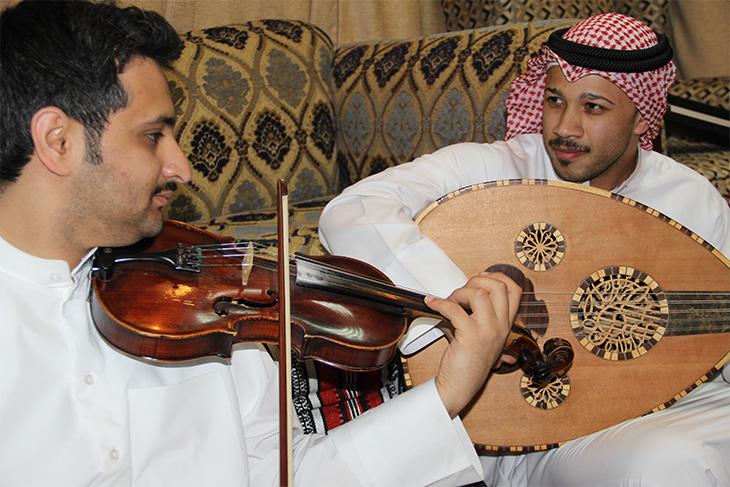Kuwait’s position at the head of the Persian Gulf and as a
major port for the shipping industry has definitely defined itself as a
seafaring country. And this seafaring culture has directly influenced their
music as well. Kuwait City is one of the larger ports in this area with people
coming and going from all over the Middle East, Africa, India, and other parts
of Asia. This merge of cultures also has a direct effect on Kuwaiti music.
One style of song, called fidjeri, is stemmed from their once-renowned pearl diving industry.
It includes a lead singer with a chorus who sings backup accompanied by drums
and clapping. There are actually eight different genres, some reserved for
where you were singing these songs. Two styles called al arda al bahariya and al-nahma
were inspired from the sailing culture. Liwa
and fann al-tanbura are styles that
developed out of various East African traditions.
Kuwait has always been a frontrunner when it comes to music
in the Gulf countries. During the 1970s, Kuwaitis were known for producing a
type of bluesy music called “sawt.” Sawt is performed in other countries in the
region as well. Much of the first commercially recorded music was produced in
studios located in Kuwait whose music became popular throughout the
Arabic-speaking world. Artists have also risen to notoriety through popular TV shows
as well. Although much of their early music history was preserved and documented,
a large portion of this history was destroyed during the Gulf War when Iraq
invaded the country.
Many of the dances in Kuwait are related to the sea,
sailors’ life, boats, etc. But there are also songs and dances that have to do
with the desert as well. It’s quite common for many of these dance songs to use
the zither and the lute, and many dances include the performers clapping along
in rhythm while dancing. There are a variety of other dances including the ardah, which showcases the performer’s
sword skills. (I certainly hope you start out with wooden swords; otherwise
this could end badly.) These dances are also accompanied by drumming and a
poetry reading (the three together seem a little random). Weddings and other
social events are also popular places for other dances such as the tanboura, the samri, and the khamari.
I couldn’t find a lot of artists on Spotify, but I did find
a few and listened to them. I found a couple of songs by Nawal al-Kuwaitiya. It
was slower and had a classical music feel to them mixed with classical Middle
Eastern instruments. I also noticed the reliance of the chorus of background
singers who accompany the lead singer.
I also listened to Nabeel Shuail. His music is built on
Middle Eastern percussion rhythms and utilizes other regional instruments such
as the tabla and is accompanied by a string section. Like the vast majority of
music coming from Kuwait, it is sung in Arabic. It also makes use of the chorus
of background singers as well.
I found Abdallah al-Rowaished’s album Meta Bansaak and listened to several songs from this album. I
thought it was pretty catchy. The string part was definitely built on Arabian
melodic scales. He also made use of the chorus accompanying the lead singer.
There was some variety in musical style (some fast songs, some slower songs).
It also seems at times that there might be some use of electronic instrument
(synthesizers, perhaps?) along with the acoustic instruments. However, I found this video that looks like they were inspired of the Indian Bollywood style of singing and dancing.
Bashar al-Shatty is the only one I listened to on Spotify
who had any kind of Western pop sound in his music. He still incorporated all
of the traditional sounds (the background chorus, the traditional instruments,
the Arabian melodic scales), but there was definitely more of a Western sound emerging
in a few of his songs. There were other artists out there who fell into this
category as well, but from what I could tell from my searches, most were kind
of underground or local bands.
Up next: the food

No comments:
Post a Comment